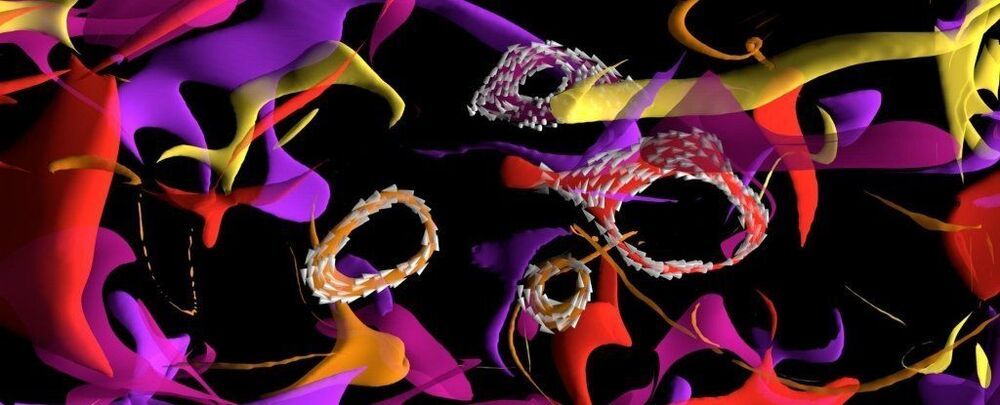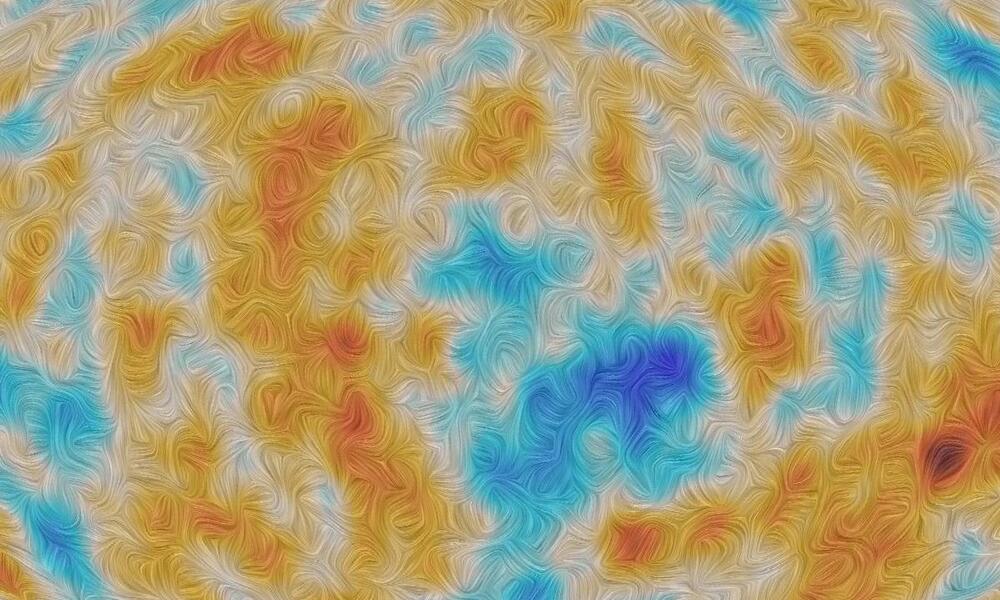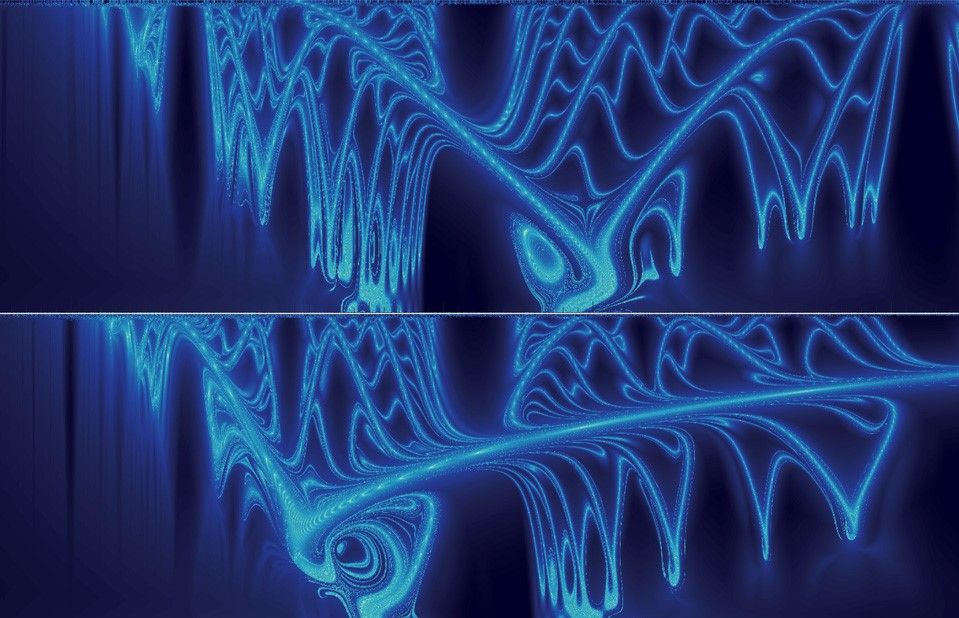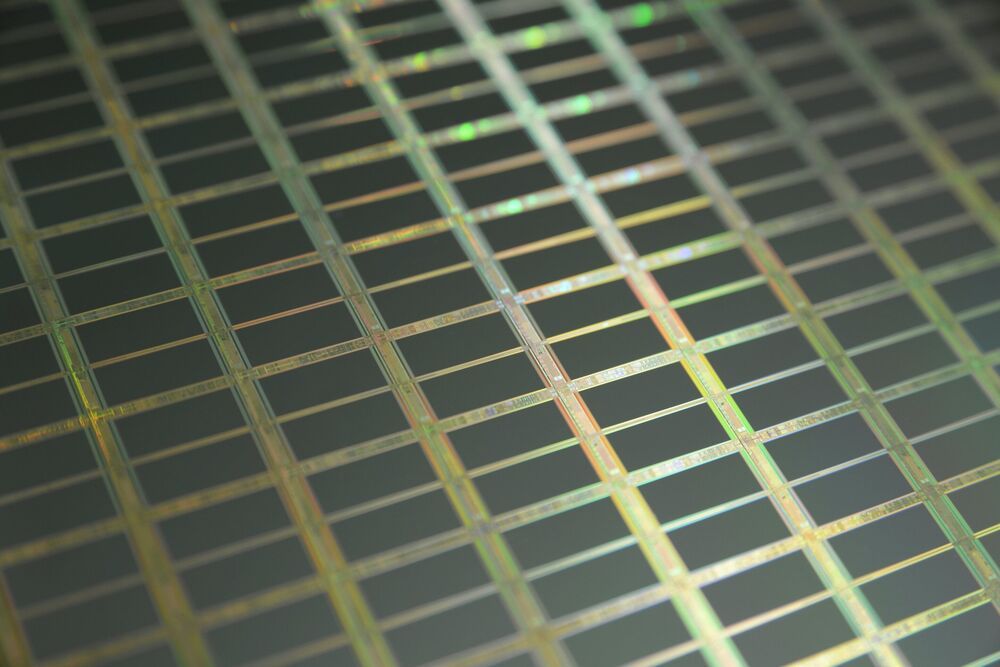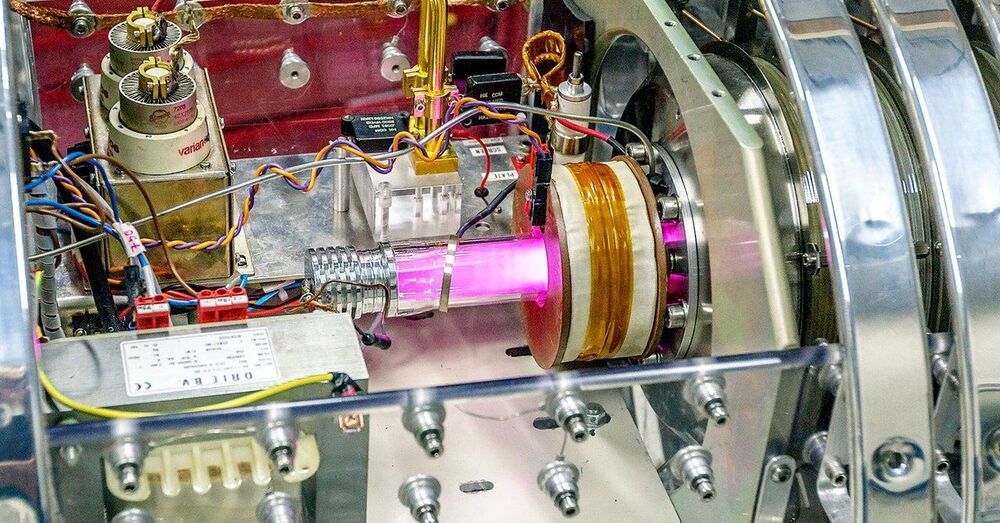Distant light from the big bang is twisted as it travels to us. This could mean dark matter is more exotic than we thought.
The oldest light in the universe is that of the cosmic microwave background (CMB). This remnant glow from the big bang has traveled for more than 13 billion years. Along the way, it has picked up a few tales about the history and evolution of the cosmos. We just need to listen to what it has to say.
One of the ways the CMB tells a story is through its polarization. If you think of light as an oscillating wave, then this wave motion can have different orientations, the orientation of a light wave’s oscillation is known as its polarization. Often, light is a random jumble of orientations, making it unpolarized, but the light from the CMB is light that has scattered off the hot gas of the early universe and has an orientation known as E-mode polarization.
If there were nothing but empty, flat space between us and the cosmic microwave background, then all the light from the CMB would be E-mode polarized. But deep space isn’t empty. It’s filled not only with diffuse gas and dust, but also dark matter and dark energy. As the light from the big bang travels through this, its polarization changes slightly, twisting through an angle,? This shifts the orientation of CMB light toward B-mode polarization.
